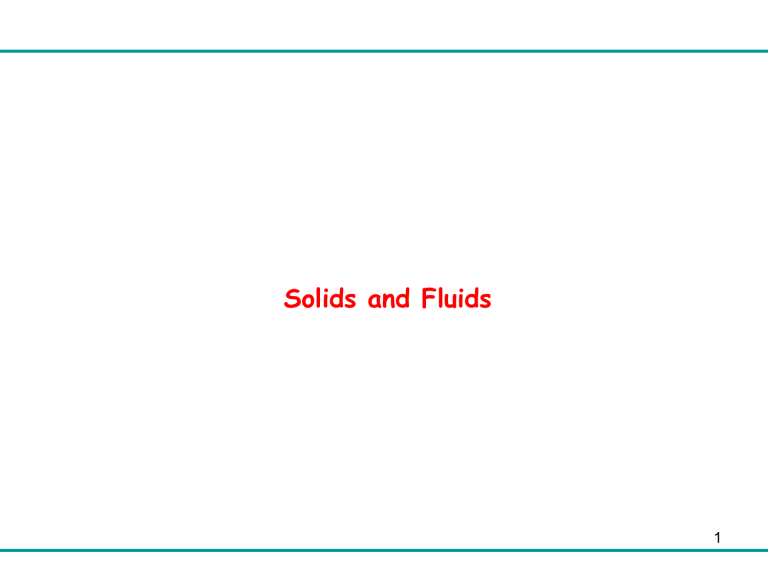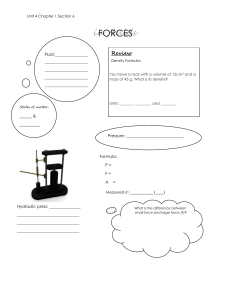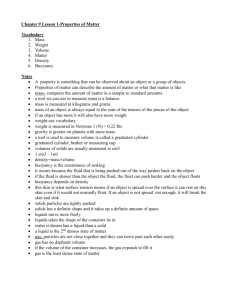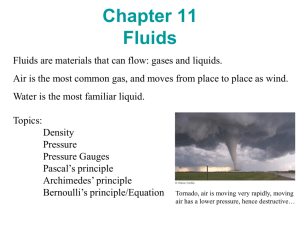
Solids and Fluids 1 States of Matter 2 States of Matter A solid is a rigid body takes a lot of energy to change its shape. Solids can be classified into two types: i) Crystalline solids have atoms that are structured in an orderly fashion. ii) Amorphous solids have randomly arranged atoms. b) A liquid is fluid in nature moderate energy required to change its shape. c) A gas is also fluid in nature little energy required to change its shape. 3 States of Matter If a gas gets hot enough, electrons circling the nucleus of the atoms in the gas are “ripped” away from the nucleus the gas becomes ionized ionized gas is called a plasma. 4 Density 5 Pressure The unit of pressure is the Pascal 1 N/m2 = 1 Pa If an object is immersed in a gas or a liquid, the gas or liquid exerts a pressure on the object. This is because the molecules of the gas or liquid are continually hitting and giving an impulse to the walls of the object. The larger the area of the wall, the more molecules in a given time hit the wall and therefore the greater the impulse. 6 The Deformation of Solids The amount of shape change (deformation) for a given amount of energy supplied to a solid is called the elasticity of the solid. a) Stress is related to the force causing the deformation: b) Strain is a measure of the degree of deformation: c) For small stresses, strain is directly proportional to stress: 7 Change of Pressure with Depth 8 Atmospheric Pressure The same is true for the atmosphere The force on an area is the weight of the column of air above it. A difference with the case of a liquid is that the density of air decreases with height. The pressure of air at the surface of the Earth is 1.01 x 105 Pa = 14.7 lb/in2 A liquid is essentially incompressible so its density doesn’t change with pressure 9 Pascal’s Principle Pascal’s Principle states: Pressure applied to an enclosed fluid is transmitted undiminished to every point of the fluid and to the walls of the containing vessel. Since we often measure pressure in fluids that are open to air at one end of a container, we can use Pascal’s principle to write where P is the atmospheric pressure at the Earth’s surface 10 Pressure Measurement 11 Pascal’s Principle 12 Buoyancy Archimedes’ Principle: Any body completely or partially submerged in a fluid is buoyed up by a force equal to the weight of the fluid displaced by the body. 13 Buoyancy 14 Floating 15 Archimedes’ Principle 16 Sink of Float 17 Equation of Continuity The continuity condition requires the mass flux of a fluid through a pipe is constant: Mass Flux = Av = constant [kg/s], A: cross-sectional area of pipe at two different points (1) and (2). v: velocity of fluid at two different points (1) and (2). Av: flow rate. The above equation is known as the equation of continuity the smaller you make the cross-sectional area of a pipe, the faster the fluid flow. 18







